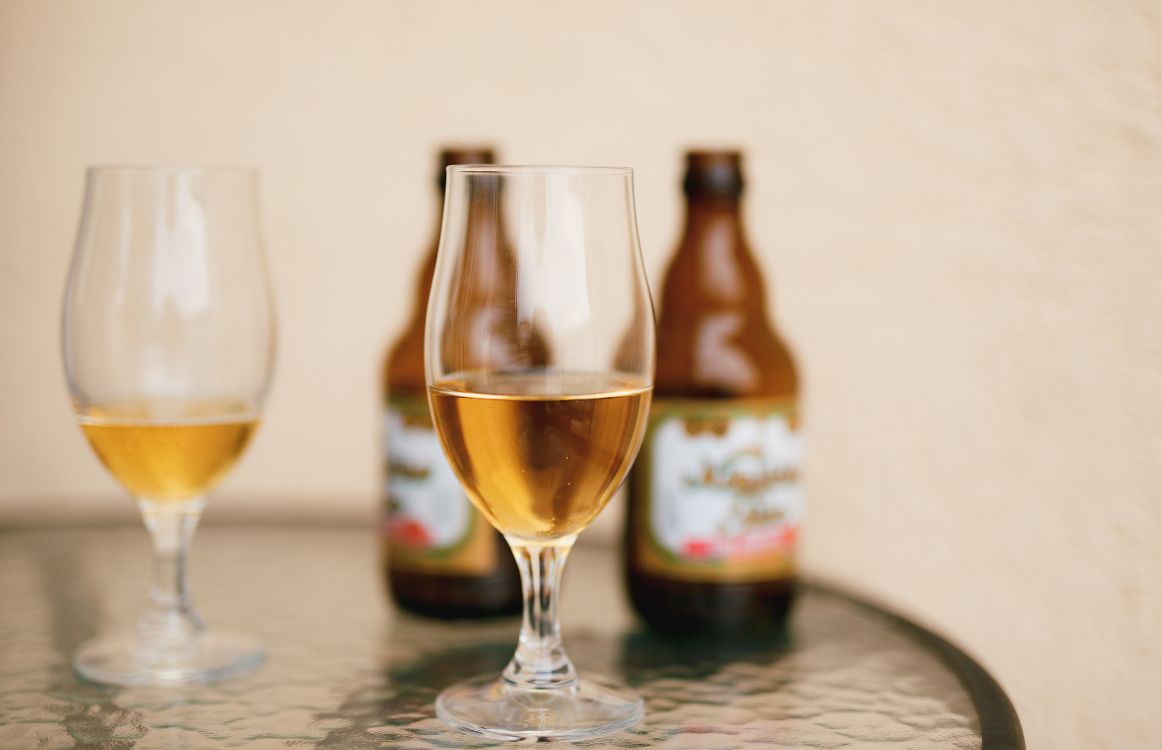What Is Mouthfeel in Beer?
Some call it texture, others call it mouthfeel, and still others talk about the body. All of these descriptors lead to the question, “what is mouthfeel in beer?” The answer, while simple enough, deserves not only explanation but also help with language around the concept of mouthfeel.
Thus, we can begin with a definition, and then we must venture into the deeper territory of how we got to that definition in the first place and what we can do with it.

What Is Mouthfeel in Beer?
Mouthfeel in beer is exactly what it sounds like – how beer feels in your mouth. Some will call it the texture, as this word perhaps more accurately describes the experience of drinking beer and trying to explain what is happening at this point in your relationship to the beer.
Others might discuss the body of the beer, as this term helps create an image of which part of the beer and the beer experience you are talking about.
Still, texture seems to describe something more visceral, a situation that should include physical touching with the skin.
And body is not always easily translatable to conversations around beverages.
Thus, mouthfeel is the word we use to best explain what we feel in our mouths when we drink beer.
What Contributes to Mouthfeel in Beer?
We typically use three major categories to discuss mouthfeel – carbonation, fullness, and aftertaste.
Carbonation
The first thing we think of when we drink beer, in terms of the tactile sensations in our mouths, is carbonation. Often, you can even experience carbonation before the beer hits your tongue. Bubbles may be fizzing and popping against your nose. And once you do drink the beer, you can sense the textural shifts not just in fizziness or tingles of carbonation, but also the size of the bubbles and the smoothness or lack thereof of the foam in the beer as well.
Beers that are infused with nitrogen tend to have a richer, tighter foam and much smaller bubbles in comparison to those that are force carbonated with CO2, and the difference is notable. Think of the contrast between a Guiness stout beer and a wheat beer like Hefeweizen. The textures of foam and bubbles alone are vastly different. Nitrogen beers are typically thought of as creamier, whereas CO2 heavy beers are crisper and offer more of a “sting.”
Fullness
Fullness is the word we use when we want to talk about how thick or thin a beer is. The most obvious example would be the distinction between an imperial stout or porter and a light beer. We’re talking about opposite ends of a fullness spectrum here.

The greatest contributor to fullness in beer is the grain. For a grain with highly fermentable sugars, like malted barley or corn, you will generally find a beer that is less dense and viscous. In contrast, a beer made with unfermentable sugars like ungerminated or unmalted wheat, you will find more clouds and haze in your beer, which lend to a richer mouthfeel. The same rule applies to many oat based beers, like stouts, particularly if adjuncts like chocolate or coffee are included, which hang in the beer and make it increasingly thick and rich in terms of mouthfeel.
Of course, a pale ale made with highly fementable sugars can also have hops included, especially dry hops, which can remain in beer and create a more dense experience.
Fullness all comes down to which ingredients are used and when.
Aftertaste
Aftertaste, or afterfeel, of course refers to the way a beer lingers in the mouth after it has been swallowed. Beers that are especially hoppy, like those with extra hops added during the boil, will come across as incredibly bitter, and bitterness tends to hang out in the mouth long after the beer has been drunk.
There are also factors like dryness, stickiness, and oiliness that fall in the category of aftertaste or afterfeel.
In general, aftertaste is created by the way in which the beer is brewed. For example, bitterness often has less to do with how many hops are in the beer and more to do with when hops are added. The longer the hops sit in the beer, particularly if they are added while the wort is hot, the more the bitterness of the hops will come out in the beer, and by extension show up in your mouth.
Further, dryness in beer tends to relate mostly to how long the yeast sat in the beer. The longer the yeast sits in the beer, the more sugars it will consume and “mop up,” which result in a less sweet and more dry aftertaste in beer.
On the opposite end of this process, the less time the yeast spends in beer, the more likely you are to get extra diacetyl in beer, which only gets fully mopped up by yeast. Diacetyl is what causes that oily aftertaste.
Beer Mouthfeel Descriptors
In the end, we can use any of the words here in this article to describe mouthfeel.
For carbonation, we can employ words like soft, effervescent, bubbly, gentle, sparkling, fizzy, zippy, low carbonation, creamy, smooth, and of course, flat.
For fullness, we can implement a vocabulary that includes dense, viscous, heavy, light, thick, thin, and light-, medium-, or heavy-bodied.
And for aftertaste, we can use words like astringent, bitter, oily, and chalky.
It is important to note that there are many, many other words used to describe beer in terms of flavor and aroma, and the words here are used primarily and almost exclusively used to describe mouthfeel, or body.
At first, you should try out the language as you taste various beers and see how they are described on menus and by the brewers.
Eventually, you will get the hang of it and start describing mouthfeel in beer like a pro.
Cheers!
Are you still pitching fresh yeast every time? By reusing your yeast, you can save up to hundreds of thousands of dollars per year on just yeast alone!
Join the hundreds of brewers from all around the world using the Smartest Automated Yeast Cell Counter! Request a Free Demo Account today and experience firsthand how Oculyze can take your brewery to the next level!
Sources:
Stay on top on important fermentation insights – subscribe to our monthly newsletter and receive a hand-picked selection of our most relevant articles straight to your inbox.
Never miss a beat and get real time updates with a new article each workday by subscribing our social media channels.
Instagram | Facebook | Twitter | YouTube


